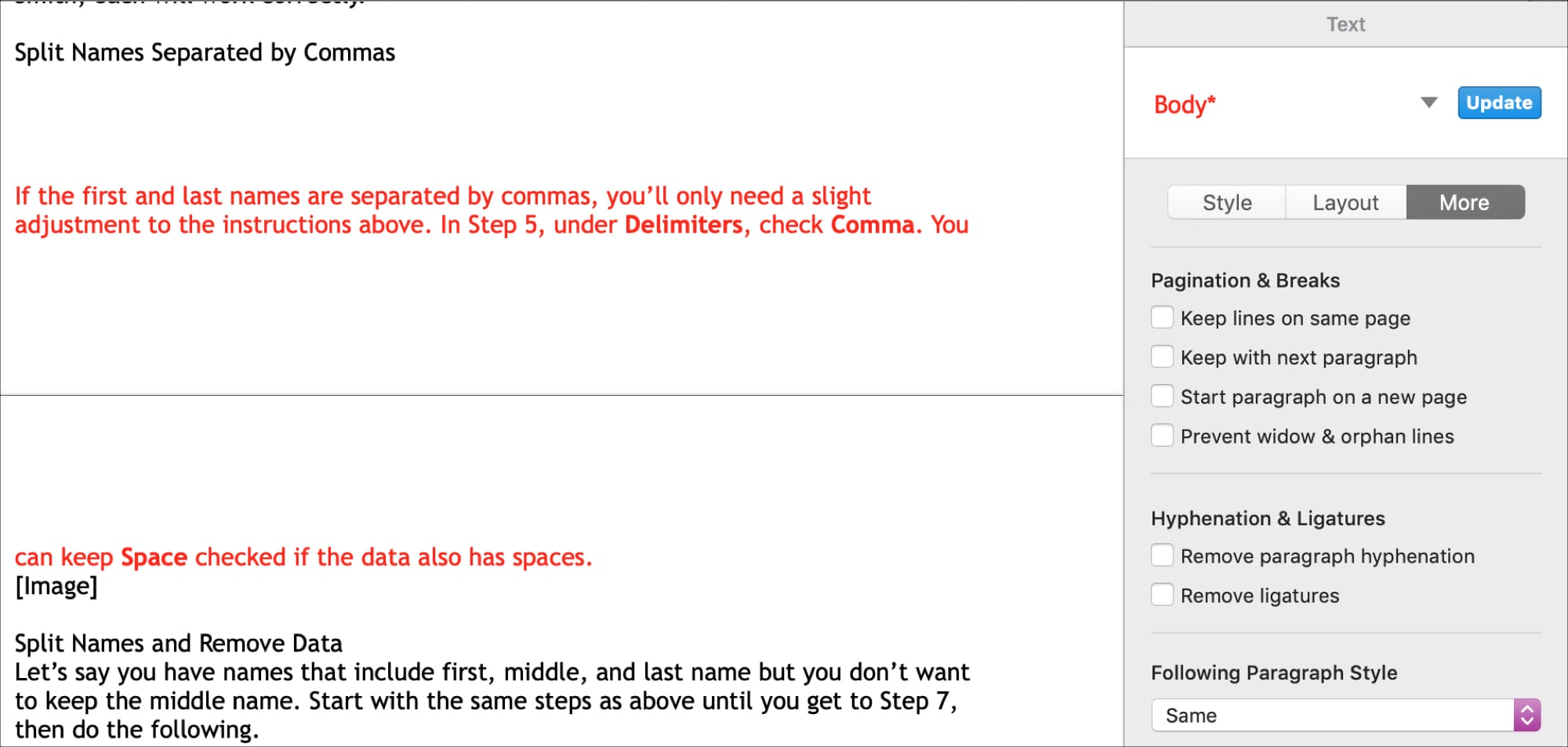

If you’d like to learn more about how to proofread texts of various kinds, our Becoming A Proofreader course was made for you! Sign up for a free trial today to find out more. If they want you to then tweak the text to remove widows and/or orphans, you can do so. And many word processors even come with in-built features to prevent widows and orphans occurring.īut, if you know your client will be skipping the typesetting process and printing from the draft, you can note any issues with the layout you spot in the document. When copy editing a document in a word processor, meanwhile, widows, orphans, and runts aren’t usually an issue since the text isn’t set in place. However, you will not need to change them directly. Widow Orphan Control in MS Word by Chris Menard - YouTube. A single word on a new line at the end of a paragraph. You may even want to leave a comment with a suggestion for fixing it (e.g., cutting a word or two from a preceding line). Microsoft Words page layout options enable you to set the widoworphan control and avoid distracting single-line text left in the top and bottom of your document page. When proofreading a typeset text, such as the page proofs for a book, you’ll want to point out widows, orphans, and runts for your client. Thus, some designers and publishers prefer to avoid them.ĭue to the variation in terminology, moreover, it is always worth checking exactly what your client means if they mention widows, orphans, or runts in the brief for a proofreading job. Runts like these aren’t necessarily problems, but they can look untidy and leave a lot of extra white space on a page.

What constitutes a runt also varies, though it can include anything less than half the width of a paragraph. These lonely words and phrases are also known as runts in some cases. Here is a common mnemonic (supplied by the lovely folks at Wikipedia) to help you remember the difference: “An orphan has no past a widow has no future,” or “An orphan is left behind, whereas a widow must go on alone.”Īlternatively, if you’re really into depressing mnemonic devices to help you remember common design elements, here is one more: “An orphan is alone from the beginning a widow is alone at the end.A single word on a new line at the end of a paragraph. So we went through the copy, and I adjusted it so that there wouldn’t be any orphans or widows in the finished design piece - which, as I write this, sounds like a wonderful thing. Reviewing the finished copy, the team was distressed over some parts of the copy that when put into the template, created these widows and orphans. I personally have experienced the woe of having an orphan and widow when working on a downloadable book with our design team. This separates them from the rest of the paragraph and, generally speaking, is considered unpleasant looking by the design community. A widow is considered poor typography because it leaves too much white space between paragraphs or at the bottom of a page. In typesetting, widows and orphans are lines at the beginning or end of a paragraph that are left dangling at the top or bottom of a column. A widow is a very short line usually one word, or the end of a hyphenated word at the end of a paragraph or column. However, it does accurately convey how seriously design lovers take this faux pas. Is there a way to setup within my paragraph style to preve. “Widows” and “orphans” sound incredibly morbid, and the designer who coined these terms was definitely a macabre lady or gent. Hi, I constantly create multi-languaged leaflets within InDesign CS5 and the one thing I often find is that I constantly have to revisit the entire document to prevent widows (or orphans - whatever you call them) at the end of a paragraph. Under Pagination, select Widow/Orphan control. On the Home tab in Word, or on the FORMAT TEXT tab in an Outlook email, select the Paragraph Dialog Box launcher. What term do you find yourself explaining most often to new hires during onboarding? Let us know. Select the paragraphs in which you want to control widows and orphans. If orphans and widows are a reoccurring problem for you, see what options your word processor offers.
#WIDOW AND ORPHAN IN WORD SERIES#
This is our latest in a series of posts aimed at helping new marketers learn that language. They can be solved simply by adding a line of space before, to force them onto the next page.


 0 kommentar(er)
0 kommentar(er)
